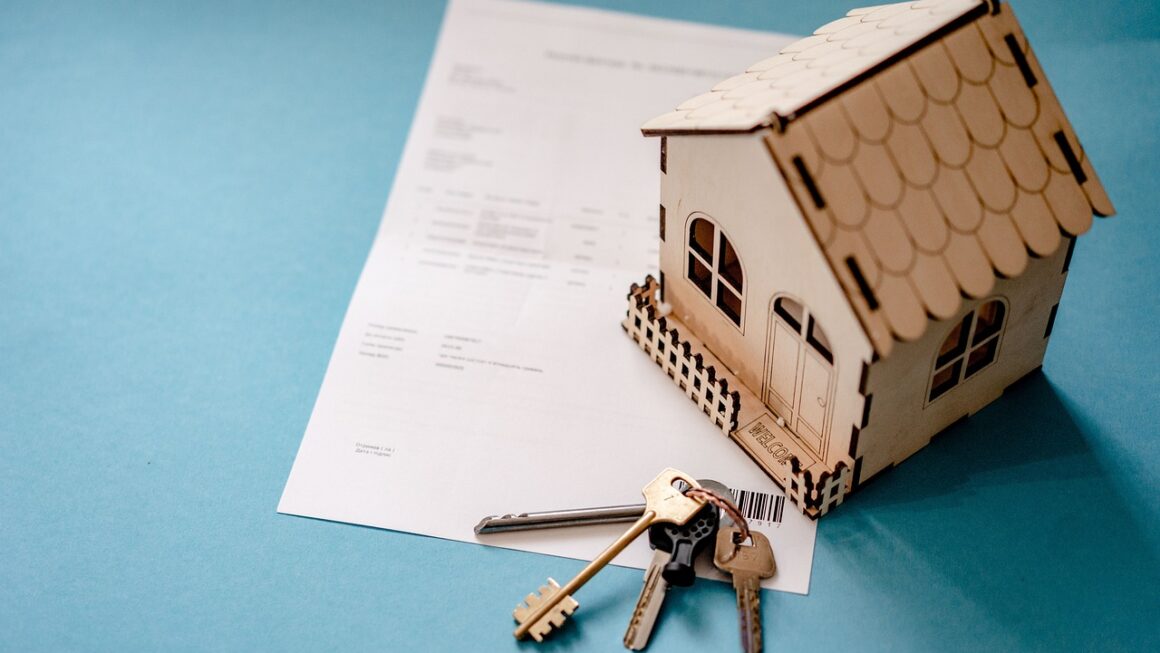Budgeting can feel like a chore, a restrictive box confining your financial freedom. But in reality, a well-structured monthly budget is a powerful tool that unlocks financial security, empowers you to achieve your goals, and brings clarity to your spending habits. It’s about understanding where your money goes and directing it towards what truly matters to you. This guide provides a comprehensive overview of monthly budgeting, equipping you with the knowledge and strategies to take control of your finances and build a brighter financial future.
Understanding the Importance of Monthly Budgeting
Why Budgeting Matters
A monthly budget is more than just tracking income and expenses; it’s a roadmap for your financial life. It helps you:
- Gain Financial Awareness: Understand where your money is going and identify areas where you can cut back.
- Achieve Financial Goals: Whether it’s buying a house, paying off debt, or saving for retirement, a budget helps you prioritize and allocate funds accordingly.
- Reduce Financial Stress: Knowing you have a plan in place can alleviate anxiety and provide a sense of control over your finances.
- Prepare for Unexpected Expenses: A budget allows you to build an emergency fund to handle unexpected costs without derailing your financial progress.
- Improve Your Credit Score: By tracking your bills and ensuring timely payments, a budget can help improve your credit score.
Statistics Highlighting the Benefits
- According to a recent survey by the National Foundation for Credit Counseling, nearly 60% of Americans don’t have a budget. This lack of planning can lead to debt accumulation and financial instability.
- Studies show that individuals who budget regularly save significantly more than those who don’t. A budget helps you identify savings opportunities and allocate funds towards your financial goals.
Actionable Takeaway
Start tracking your expenses. Even without a formal budget, understanding where your money is going is the first step towards taking control of your finances. Use a notebook, spreadsheet, or budgeting app to monitor your spending for a week.
Creating Your Monthly Budget: A Step-by-Step Guide
Step 1: Calculate Your Monthly Income
The first step in creating your budget is to determine your total monthly income after taxes. This includes:
- Salary/Wages: Your net income after deductions.
- Side Hustle Income: Income from freelance work, part-time jobs, or other sources.
- Investment Income: Dividends, interest, or rental income.
- Government Benefits: Social security, disability, or unemployment benefits.
- Example: Let’s say your monthly net salary is $4,000, and you earn an additional $500 from freelance work. Your total monthly income is $4,500.
Step 2: Track Your Monthly Expenses
This is arguably the most crucial part of budgeting. Categorize your expenses into:
- Fixed Expenses: Expenses that remain relatively constant each month, such as rent/mortgage, loan payments, and insurance premiums.
- Variable Expenses: Expenses that fluctuate each month, such as groceries, utilities, entertainment, and transportation.
- Periodic Expenses: Expenses that occur less frequently, such as annual subscriptions, car registration, and holiday gifts. Remember to divide these by 12 to allocate a monthly amount.
To track your expenses, you can use:
- Budgeting Apps: Mint, YNAB (You Need A Budget), Personal Capital, and Simplifi by Quicken are popular options.
- Spreadsheets: Create a custom spreadsheet using Excel or Google Sheets.
- Notebook: Manually track your expenses in a notebook.
- Example:
- Fixed Expenses: Rent ($1,500), Car Payment ($300), Student Loan ($200), Insurance ($150) = $2,150
- Variable Expenses: Groceries ($400), Utilities ($200), Gas ($100), Entertainment ($150), Dining Out ($100) = $950
- Periodic Expenses: Car Registration ($120 annually = $10/month), Christmas Gifts ($600 annually = $50/month) = $60
Step 3: Categorize and Analyze Your Spending
Once you’ve tracked your expenses for a month, analyze where your money is going. Identify areas where you can potentially cut back. Common areas to scrutinize include:
- Dining Out: Consider cooking at home more often.
- Entertainment: Explore free or low-cost entertainment options.
- Subscriptions: Cancel any unused or unnecessary subscriptions.
- Impulse Purchases: Avoid making unplanned purchases.
Step 4: Create Your Budget and Allocate Funds
Now that you know your income and expenses, create your budget by allocating funds to each category. Use the following equation:
- Income – Expenses = Net Income (Surplus or Deficit)
Ideally, you should have a surplus. If you have a deficit, you need to cut expenses or increase income.
- The 50/30/20 Rule: Allocate 50% of your income to needs, 30% to wants, and 20% to savings and debt repayment. This is a good starting point for budgeting.
- Example:
- Income: $4,500
- Expenses (from above): $2,150 (Fixed) + $950 (Variable) + $60 (Periodic) = $3,160
- Surplus: $4,500 – $3,160 = $1,340
Now, allocate the $1,340 surplus to:
- Savings: $670 (Emergency fund, retirement)
- Debt Repayment: $670 (Paying off high-interest debt)
Step 5: Monitor and Adjust Your Budget Regularly
Your budget is not set in stone. It’s a living document that should be reviewed and adjusted regularly (ideally monthly) to reflect changes in your income, expenses, or financial goals.
Actionable Takeaway
Choose a budgeting method (app, spreadsheet, or notebook) and commit to tracking your expenses for one month. Then, create a budget based on your income and spending habits.
Budgeting Methods: Finding the Right Fit
Zero-Based Budgeting
- Concept: Allocate every dollar of your income to a specific category, so your income minus expenses equals zero.
- Benefits: Provides a detailed view of your finances and ensures that every dollar is accounted for.
- Challenges: Requires meticulous tracking and can be time-consuming.
The 50/30/20 Rule
- Concept: Allocate 50% of your income to needs, 30% to wants, and 20% to savings and debt repayment.
- Benefits: Simple and easy to implement.
- Challenges: May not be suitable for everyone, especially those with high debt or low income.
Envelope Budgeting
- Concept: Use cash for variable expenses. Allocate a specific amount of cash to different envelopes (e.g., groceries, entertainment) and only spend what’s in the envelope.
- Benefits: Helps control spending and prevent overspending.
- Challenges: Requires carrying cash and can be inconvenient.
Activity Based Budgeting
- Concept: Review spending habits and categorize each activity, then make a decision based on if the activity will provide value or not.
- Benefits: Can see what each activity costs in dollars and cents, and decide if it is valuable to continue.
- Challenges: Hard to track if not paying attention to the details.
Which Method Is Right for You?
The best budgeting method depends on your individual needs and preferences. Experiment with different methods to find the one that works best for you. Consider your financial goals, income level, and spending habits.
Actionable Takeaway
Research different budgeting methods and choose one to try for the next month. Be prepared to adjust your approach as needed.
Tips for Successful Monthly Budgeting
Set Realistic Goals
Avoid setting overly ambitious goals that are difficult to achieve. Start with small, achievable goals and gradually increase them over time.
Automate Your Savings
Set up automatic transfers from your checking account to your savings account each month. This makes saving effortless and ensures you consistently contribute to your financial goals.
Build an Emergency Fund
An emergency fund is a crucial component of a healthy financial plan. Aim to save 3-6 months’ worth of living expenses in a readily accessible account.
Review and Adjust Regularly
As mentioned earlier, your budget should be a living document that is reviewed and adjusted regularly to reflect changes in your financial situation.
Be Patient and Persistent
Budgeting is a marathon, not a sprint. It takes time and effort to develop good financial habits. Don’t get discouraged if you slip up occasionally. Just get back on track and keep moving forward.
Seek Professional Advice
If you’re struggling to create or stick to a budget, consider seeking advice from a financial advisor or credit counselor. They can provide personalized guidance and support to help you achieve your financial goals.
Actionable Takeaway
Identify one area where you can improve your budgeting habits, such as automating your savings or building an emergency fund. Take action this week to implement that change.
Conclusion
Mastering monthly budgeting is a journey, not a destination. By understanding its importance, implementing a step-by-step approach, and choosing the right budgeting method, you can gain control of your finances and achieve your financial goals. Remember to set realistic goals, automate your savings, build an emergency fund, and review your budget regularly. With patience, persistence, and a commitment to financial awareness, you can build a brighter and more secure financial future.




